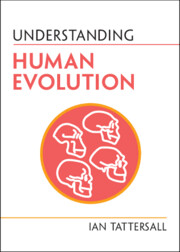Book contents
- >Understanding Human Evolution
- Series page
- Understanding Human Evolution
- Copyright page
- Reviews
- Dedication
- Frontispiece
- Contents
- Maps
- Foreword
- Preface
- Acknowledgments
- 1 Evolution
- 2 Technology: Dating, Diets, and Development
- 3 Discovery and Interpretation of the Human Fossil Record: The Early Days
- 4 Discovery and Interpretation of the Human Fossil Record: Later Developments
- 5 Early Bipeds
- 6 The Muddle in the Middle
- 7 Homo heidelbergensis and the Neanderthals
- 8 The Emergence and Spread of Homo sapiens
- Epilogue
- Summary of Common Misunderstandings
- References and Further Reading
- Figure Credits
- Index
3 - Discovery and Interpretation of the Human Fossil Record: The Early Days
Published online by Cambridge University Press: 21 July 2022
- >Understanding Human Evolution
- Series page
- Understanding Human Evolution
- Copyright page
- Reviews
- Dedication
- Frontispiece
- Contents
- Maps
- Foreword
- Preface
- Acknowledgments
- 1 Evolution
- 2 Technology: Dating, Diets, and Development
- 3 Discovery and Interpretation of the Human Fossil Record: The Early Days
- 4 Discovery and Interpretation of the Human Fossil Record: Later Developments
- 5 Early Bipeds
- 6 The Muddle in the Middle
- 7 Homo heidelbergensis and the Neanderthals
- 8 The Emergence and Spread of Homo sapiens
- Epilogue
- Summary of Common Misunderstandings
- References and Further Reading
- Figure Credits
- Index
Summary
When Charles Darwin published On the Origin of Species in 1859, only a tiny handful of human fossils – the material evidence of the ancient human history that his book implied must exist – had been discovered. Some of them had not even yet been properly recognized, although the most significant of them – the partial skeleton from the Neander Valley in Germany that had recently been found alongside the remains of extinct Ice Age animals – was on the brink of becoming the world’s most famous fossil. Discovered accidentally in 1856 by lime miners, and only preserved by great good chance, the Neanderthal skeleton – principally a large skullcap (Figure 3.1, right) and some very robust limb bones – rapidly became the subject of vigorous debate in Germany between those who thought it had belonged to a member of an ancient barbarous tribe, and those who thought it simply the remains of a pathological modern human. In England it caught the attention of the comparative anatomist Thomas Henry Huxley, an expert on dinosaurs who had been Darwin’s most vociferous supporter following the publication of the Origin, but who had also chided him for rejecting the notion that Nature at least occasionally “makes jumps” (i.e., speciates).
Keywords
- Type
- Chapter
- Information
- Understanding Human Evolution , pp. 34 - 50Publisher: Cambridge University PressPrint publication year: 2022

